On the road to Taliouine organic saffron
12 days goes by quickly, especially in Morocco where time stands still and you take your time.
Take your time, then, to get from Marrakech Menara airport to Taliouine via the Test Pass road in the High Atlas (Tizi n'Test // Tizi meaning Pass in Arabic). This road, which will soon be a century old (1924), has suffered a great deal of damage in recent weeks due to the heavy rainfall in Morocco, and where there's a lot of damage, there's little or no repair work to be done. Our vehicle, fortunately very tall, had to make do with the cracks, stones and other gaping holes in the "stabilized" road surface; young drivers or those uncomfortable behind the wheel are advised to abstain...
At the start, from Marrakech, the R203 towards Asni is a veritable boulevard, the road having been resurfaced a few years ago, and in Morocco, when roads are resurfaced, there's no hesitation in putting in the effort; so it's the equivalent of a four-lane road before us, a ribbon of black asphalt contrasting with the red of the earth and the white of the snow-capped peaks. From Asni onwards, it's back to the roads that give Morocco its charm, with wadi crossings, sand, crevasses and other land subsidence. As far as Tinmel and its magnificent 11th-century mosque, restored some twenty years ago, the road follows its course, passing through Ouirgane. The scenery is magical and sometimes offers quite surprising panoramas of the Atlas Mountains and its peaks rising to over 3000 and 4000 meters.
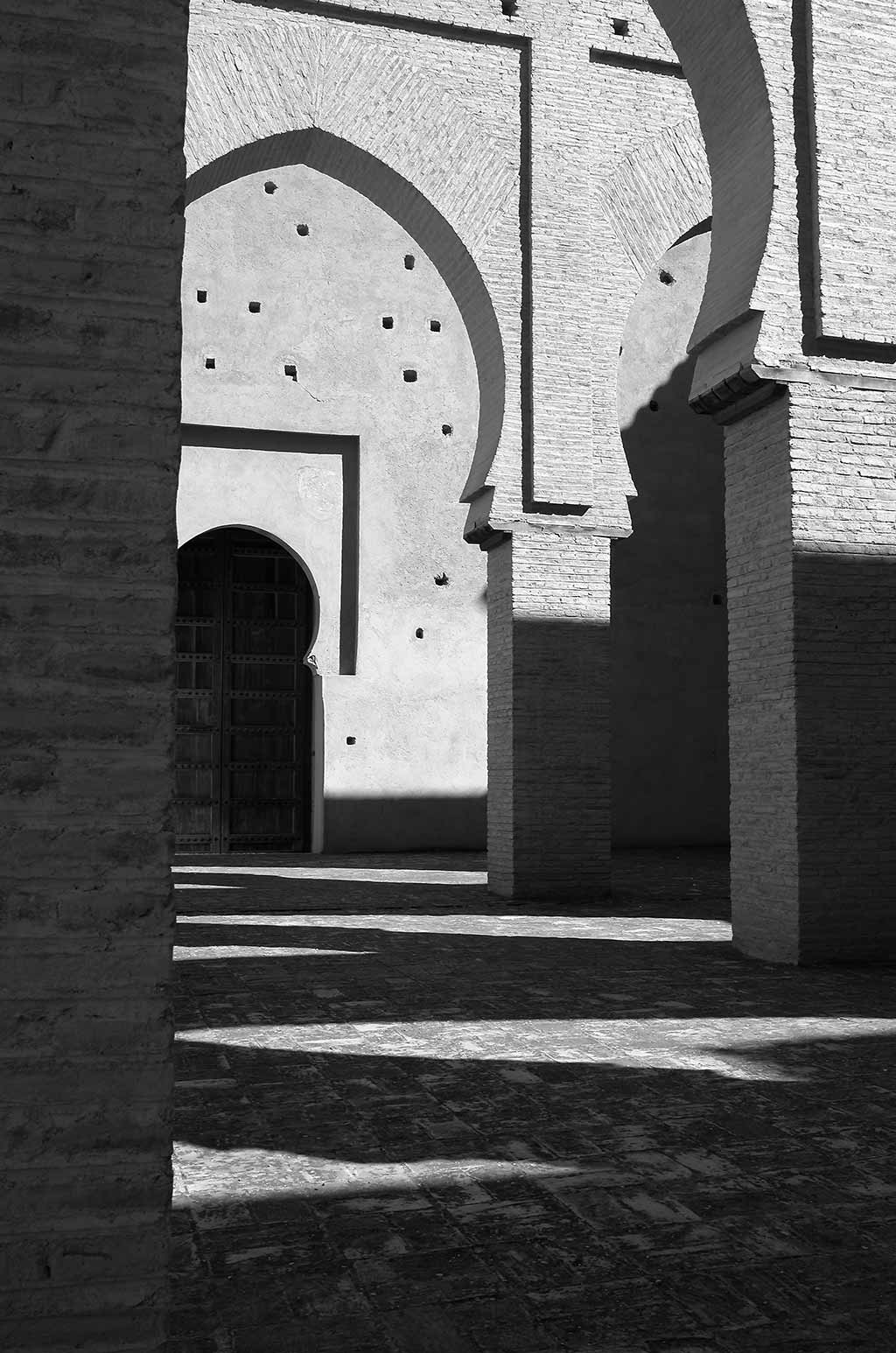
Tinmel Mosque on the Test Route
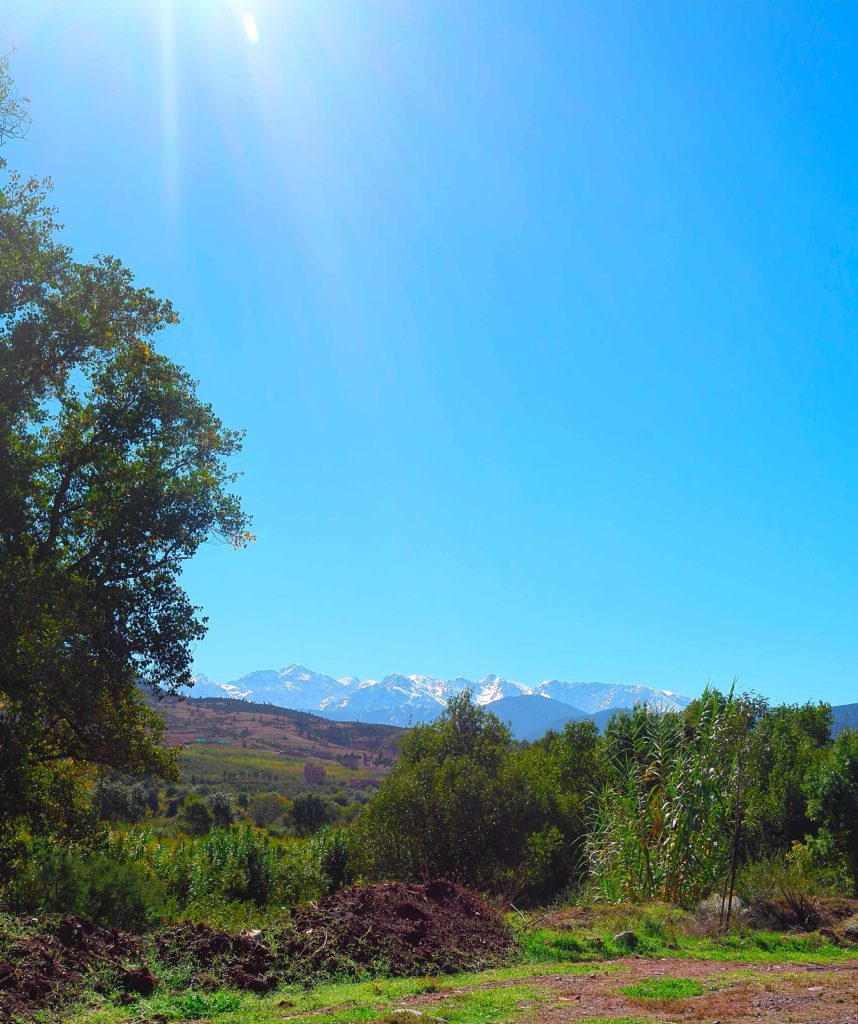
view of the Atlas massif
As you can imagine, the road is pretty rough for 30 kilometers on either side of the summit, which rises to 2093m, making it the second highest road in Morocco, after the Tichka.
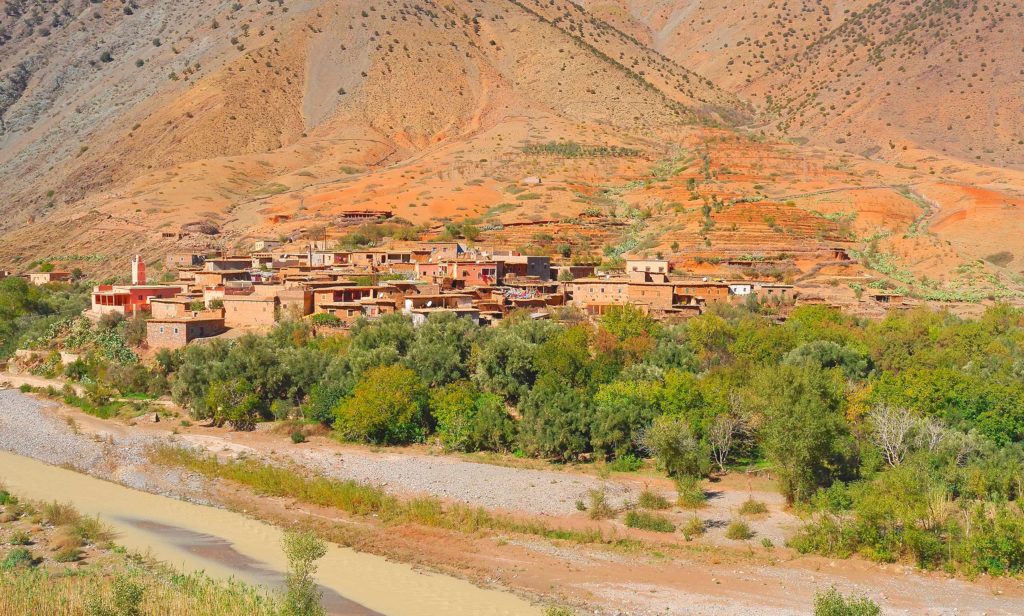
The breathtaking scenery soon makes you forget the poor state of the road, and even if you have to concentrate, your eye can't help but be drawn in all directions. The abundant rainfall made early November look like the beginning of spring, and I'd never seen Morocco so green! Green and red (the color of the earth), like the colors of the national flag, and the blue of the sky, so intense...
Arriving at the top of the Test pass is always a thrill: the few hours' climb from Marrakech are rewarded by a breathtaking view over the valley and the Souss plain 2000m below! The first few kilometers of descent are rather "tense", with heavy rains having passed through, and the condition of the road - already quite damaged - only worsened, with cars passing between the rock of the mountain and... the void... On a few occasions, you have to hold your breath and remain cautious, because the ravine, which is much too close, is a potential source of falling rocks.
We have to descend 5 to 6 kilometers below the pass to find a more pleasant but nevertheless dangerous road, with numerous landslides. The 2,000-meter descent is swallowed up in a good half-hour, Tajgalt is passed and we find ourselves once again on a newly paved road - what can I say, a road, a freeway! The last 3 km of the R203 are truly surprising, especially when you consider that everything has been done to ensure that cars and trucks bypass the Atlas via the Marrakech - Agadir freeway and no longer go over the Test pass! Anyway, here we are at the crossroads leading to Taroudant on the right and Ouarzazate on the left (via Taliouine and Taznaght).
Direction Taliouine via the beautiful N10, also known as Avenue Mohamed V. While the average speed from Marrakech to Tizi n'Test is no more than 30-40 km/h, the N10 allows you - with care - to drive at more than 80 km/h. Beware, however, of the Royal Gendarmerie and the frequent speed cameras in Morocco (si si).
We arrive in Taliouine at the end of the day, in the middle of the Saffron Festival (which this year has been brought forward by 15 days, much to my delight!). We leave the town to the east and drop our luggage at the Auberge du Safran. The hotel is fully booked, as local producers and buyers come from all over the world for the saffron festival (Italians, Germans, South Africans, Chinese, Americans, Spaniards, Saudis and so on... the world is at the foot of Morocco, of its red gold, in Taliouine, a town of 12,000 souls at an altitude of 1,100m, with one of the most beautiful geological folds in Morocco.
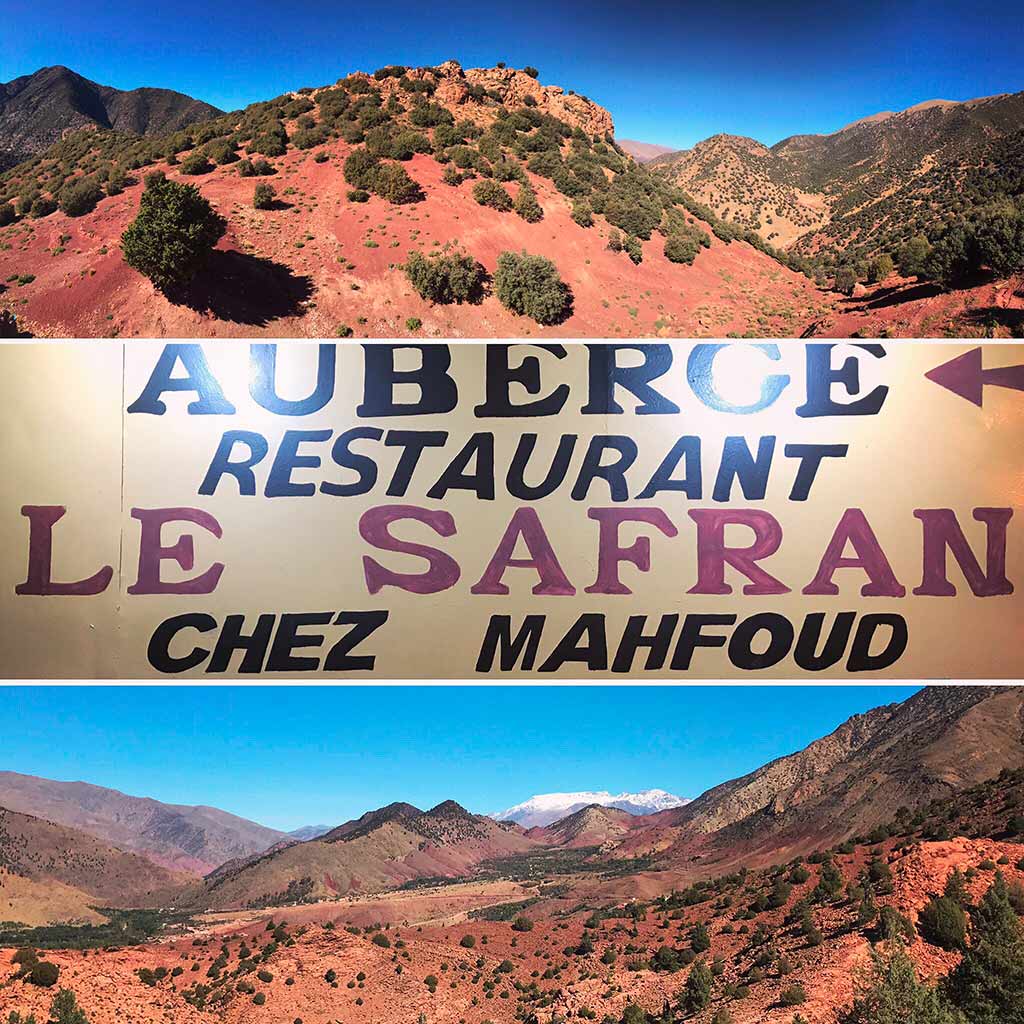
Once settled in, I head off to see Younes in the lounge, and after a few words of greeting, we agree to meet early the next morning to visit the saffron plantations a little higher up, at around 1400m altitude.
A tajine and some (excellent) French fries later at the hostel, we wake up at around 5 a.m. to have a hearty breakfast, then set off by car for the hills. It's not yet daylight, the temperature is cool but not cold, and we gradually climb through olive and argan plantations, small saffron groves and vegetable gardens; the sun rises and the mountains reveal themselves in all their splendor, the landscape is magnificent, Morocco is magnificent.
We arrive at the main saffron fields, the sun streaming over the mountains and illuminating the Crocus sativus flowers - hundreds, thousands of crocus flowers, it's incredible. As the sun climbs higher into the sky, the flowers open to reveal their intense red pistils. In just a few minutes, a carpet of violet flowers, highlighted with yellows and reds, is laid out before us. A delicate scent emanates from the flowers, and the bees buzz at ground level - it's magical.
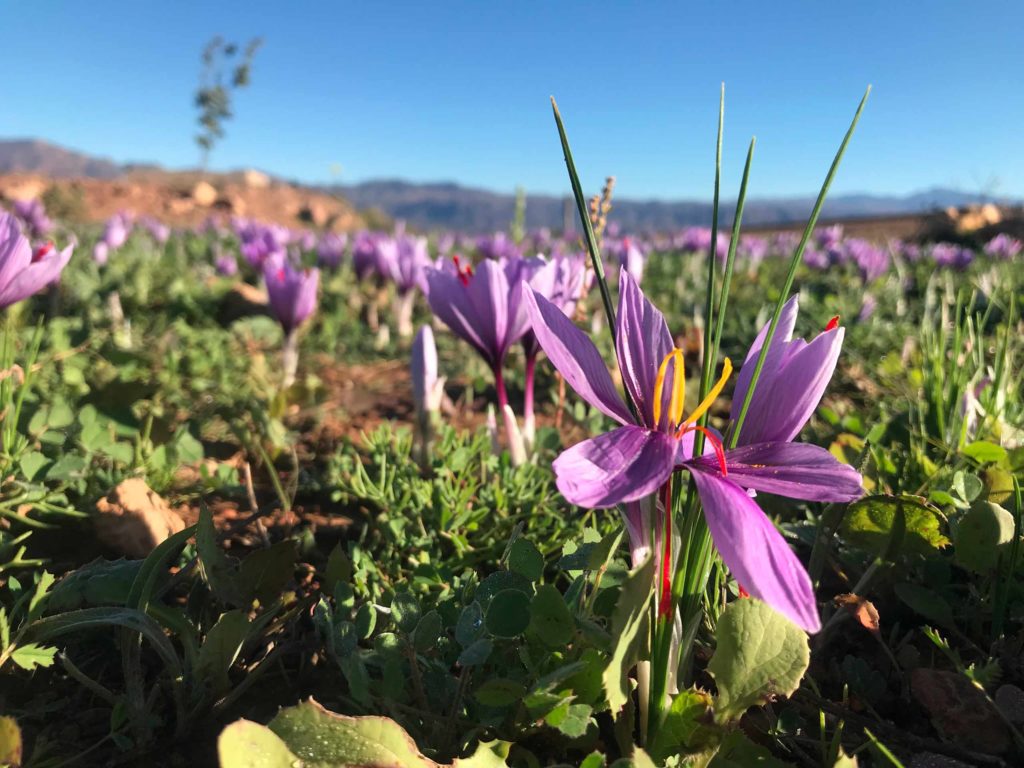
Harvesting takes place from dawn to 11 a.m./noon, and lasts a good three weeks, with women taking turns from hour to hour, day to day, and it's not unusual for the harvest to last all day, even if the heat can be quite high. The cultural revolution and rural exodus we have seen in Europe over the last hundred years or so is taking place in barely a generation here in Morocco: young people are leaving the countryside for the more Europeanized cities, where they can pursue higher education. Labor is thus becoming a real problem for the harvest (as it is for olives, argan nuts, citrus fruits and saffron).
We conclude this morning with a tea, not with mint but with saffron, which I highly recommend for its extreme complexity on the palate.
If you'd like to visit Morocco, and in particular Taliouine in the Anti-Atlas, don't hesitate to contact us for more information about this magnificent region.
